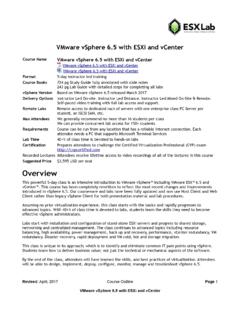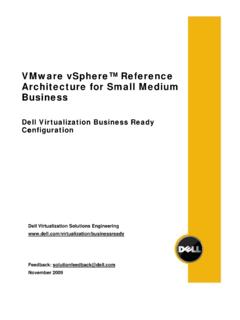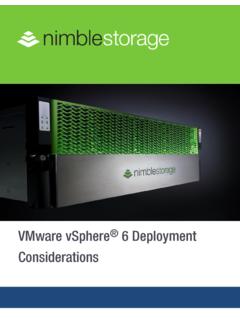Transcription of Performance Best Practices for VMware vSphere 6
1 Performance Best Practices for VMware vSphere VMware ESXi vCenter Server July 27, 2018 2 VMware , Inc. Performance Best Practices for VMware vSphere You can find the most up-to-date technical documentation on the VMware Web site at: The VMware Web site also provides the latest product updates. If you have comments about this documentation, submit your feedback to: 2007-2015, 2017-2018 VMware , Inc. All rights reserved. This product is protected by and international copyright and intellectual property laws.
2 VMware products are covered by one or more patents listed at VMware , the VMware boxes logo and design, Virtual SMP, and VMotion are registered trademarks or trademarks of VMware , Inc. in the United States and/or other jurisdictions. All other marks and names mentioned herein may be trademarks of their respective companies. Revision: 20180727 VMware , Inc. 3401 Hillview Ave. Palo Alto, CA 94304 VMware , Inc. 3 Contents About This Book 9 1 Hardware for Use with VMware vSphere 11 Validate Your Hardware 11 Hardware CPU Considerations 11 General CPU Considerations 11 Hardware-Assisted Virtualization 11 Hardware-Assisted CPU Virtualization (VT-x and AMD-V ) 11 Hardware-Assisted MMU Virtualization (Intel EPT and AMD RVI) 12 Hardware-Assisted I/O MMU Virtualization (VT-d and AMD-Vi)
3 12 AES-NI Support 12 Hardware Storage Considerations 13 Hardware Networking Considerations 16 Hardware BIOS Settings 17 General BIOS Settings 17 Power Management BIOS Settings 17 2 ESXi and Virtual Machines 19 ESXi General Considerations 19 ESXi CPU Considerations 20 UP vs. SMP HALs/Kernels 21 Hyper-Threading 21 Non-Uniform Memory Access (NUMA) 22 Manual NUMA Configuration 22 Snoop Mode Selection 23 Host Power Management in ESXi 23 Power Policy Options in ESXi 23 Confirming Availability of Power Management Technologies 24 Choosing a Power Policy 24 ESXi Memory Considerations 25 Memory Overhead 25 Memory Sizing 26 Memory Overcommit Techniques 26 Memory Page Sharing 27 Memory Swapping Optimizations 28 2MB Large Memory Pages 29 ESXi Storage Considerations 31 vSphere Flash Read Cache (vFRC)
4 31 VMware vStorage APIs for Array Integration (VAAI) 31 LUN Access Methods 31 Virtual Disk Modes 32 Virtual Disk Types 32 Partition Alignment 33 SAN Multipathing 34 Storage I/O Resource Allocation 34 iSCSI and NFS Recommendations 35 Performance Best Practices for VMware vSphere 4 VMware , Inc. NVMe Recommendations 35 vSphere Virtual Machine Encryption Recommendations 35 General ESXi Storage Recommendations 36 Running Storage Latency Sensitive Workloads 36 ESXi Networking Considerations 38 General ESXi Networking Considerations 38 Network I/O Control (NetIOC) 38 Network I/O Control Configuration 38 Network I/O Control Advanced Performance Options 39 DirectPath I/O 39 Single Root I/O Virtualization (SR-IOV)
5 39 SplitRx Mode 40 Disabling SplitRx Mode for an Entire ESXi Host 40 Enabling or Disabling SplitRx Mode for an Individual Virtual NIC 40 Receive Side Scaling (RSS) 41 Virtual Network Interrupt Coalescing 41 Running Network Latency Sensitive Workloads 42 Host-Wide Performance Tuning 44 3 Guest Operating Systems 45 Guest Operating System General Considerations 45 Microsoft Virtualization-Based Security (VBS) 46 Measuring Performance in Virtual Machines 46 Guest Operating System CPU Considerations 47 Virtual NUMA (vNUMA) 47 Guest Operating System Memory Considerations 49 Guest Operating System Storage Considerations 50 Guest Operating System Networking Considerations 51 Types of Virtual Network Adapters 51 Selecting Virtual Network Adapters 52 Virtual Network Adapter Features and Configuration 52 4 Virtual Infrastructure Management 55 General Resource Management 55 VMware vCenter 56 VMware vCenter Database Considerations 57 VMware vCenter Database Network and Storage Considerations 57 VMware vCenter Database Configuration and Maintenance 57
6 Recommendations for Specific Database Vendors 58 VMware vSphere Management 60 vSphere Clients (aka HTML5 Clients) 60 vSphere Web Clients (aka Flex Clients) 60 vSphere Web Client Back-End Performance Considerations 60 vSphere Web Client Front-End Performance Considerations 64 vSphere Web Services SDK Clients 64 VMware vMotion and Storage vMotion 65 VMware vMotion Recommendations 65 VMware Storage vMotion Recommendations 66 VMware Cross-Host Storage vMotion Recommendations 66 VMware Distributed Resource Scheduler (DRS) 68 DRS in General 68 DRS Cluster Configuration Settings 68 DRS Cluster Sizing and Resource Settings 69 DRS Performance Tuning 70 VMware , Inc.
7 5 Contents VMware Distributed Power Management (DPM) 72 DPM Configuration and Modes of Operation 72 Tuning the DPM Algorithm 72 Scheduling DPM and Running DPM Proactively 73 Using DPM With VMware High Availability (HA) 73 VMware vSphere Storage I/O Control 74 VMware Storage Distributed Resource Scheduler (Storage DRS) 75 VMware vSphere High Availability 76 VMware High Availability in General 76 Virtual Machine Component Protection (VMCP) 76 VMware Fault Tolerance 77 VMware vSphere Update Manager 79 Update Manager Deployed in Windows 79 Update Manager Deployed in Linux (with vCenter Server Appliance)
8 79 Update Manager General Recommendations 79 Update Manager Cluster Remediation 80 Update Manager Bandwidth Throttling 80 VMware vSAN 81 Hybrid versus All-Flash vSAN 81 vSAN Hardware Selection and Layout 81 Hardware Selection and Layout for Hybrid vSAN 81 Hardware Selection and Layout for All-Flash vSAN 81 Hardware Selection and Layout for vSAN in General 81 vSAN Network Considerations 81 vSAN Configuration and Use 82 vSAN Encryption 82 VMware Virtual Volumes (VVols) 84 VVol Hardware Considerations 84 VVol Workload Performance 84 VVol Management Operation Performance 84 VVol I/O Operation Performance 85 VVol Configuration Recommendations 85 VMware vCenter Single Sign-On Server 87 VMware vSphere Content Library 88 Index 89 Performance Best Practices for VMware vSphere 6 VMware , Inc.
9 VMware , Inc. 7 Tables Table 1. Conventions Used in This Manual 10 Table 4-1. Advanced Configuration Options for the vSphere Web Client Back-End 62 Performance Best Practices for VMware vSphere 8 VMware , Inc. VMware , Inc. 9 About This Book This book, Performance Best Practices for VMware vSphere , provides Performance tips that cover the most Performance -critical areas of VMware vSphere It is not intended as a comprehensive guide for planning and configuring your deployments. Chapter 1, Hardware for Use with VMware vSphere , on page 11, provides guidance on selecting hardware for use with vSphere .
10 Chapter 2, ESXi and Virtual Machines, on page 19, provides guidance regarding VMware ESXi software and the virtual machines that run in it. Chapter 3, Guest Operating Systems, on page 45, provides guidance regarding the guest operating systems running in vSphere virtual machines. Chapter 4, Virtual Infrastructure Management, on page 55, provides guidance regarding infrastructure management best Practices . NOTE For planning purposes we recommend reading this entire book before beginning a deployment. Material in the Virtual Infrastructure Management chapter, for example, might influence your hardware choices.
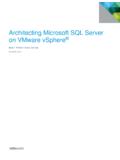
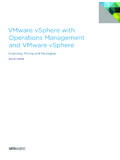

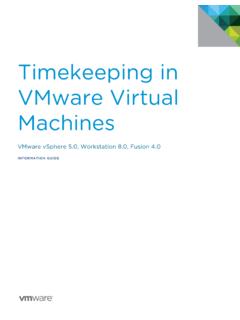
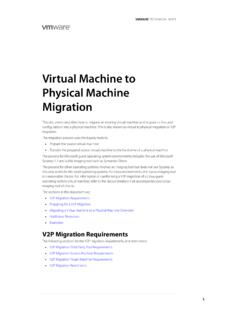
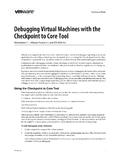
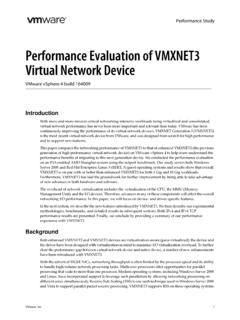
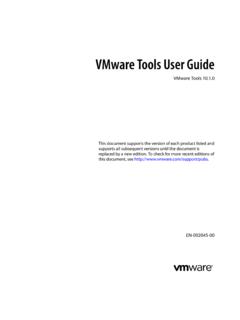
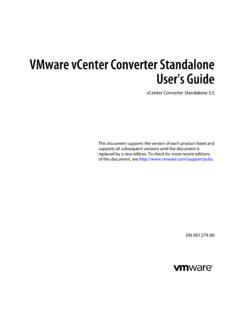
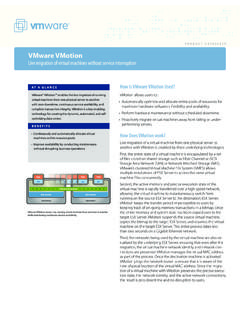
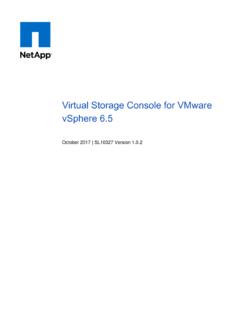
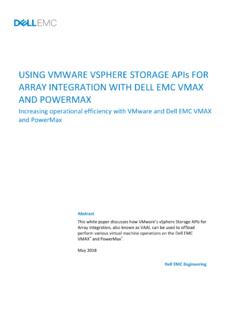
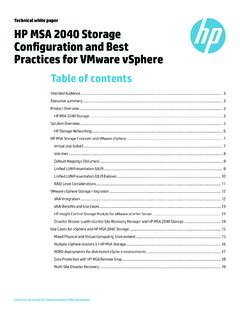
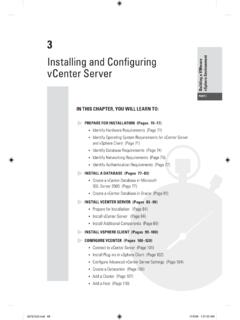
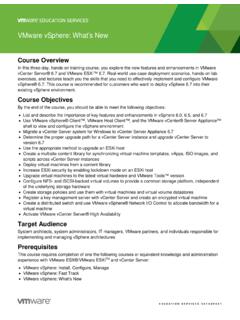
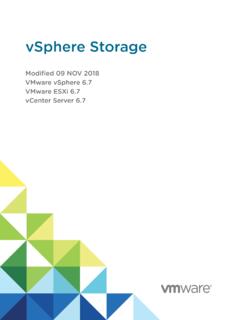
![VMware vSphere: Install, Configure, Manage [V6.7] H9TG1S](/cache/preview/f/3/c/6/b/5/5/e/thumb-f3c6b55ee4cf7c515d9a57a30862569e.jpg)
